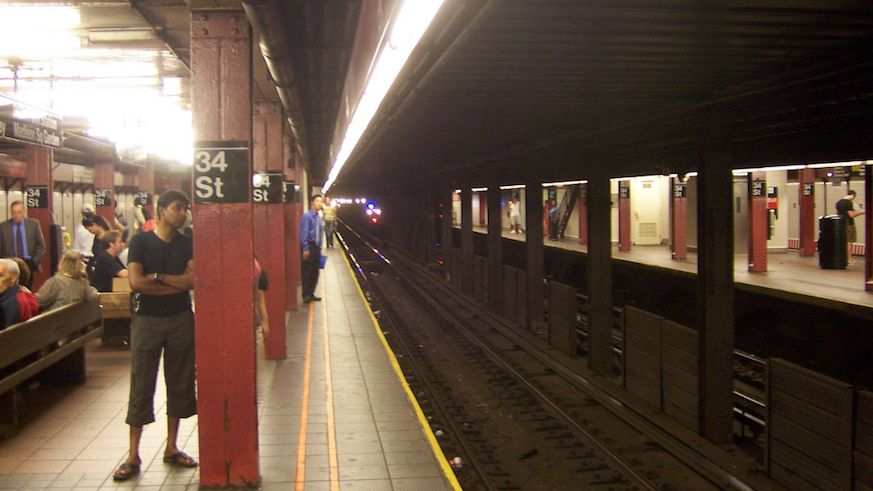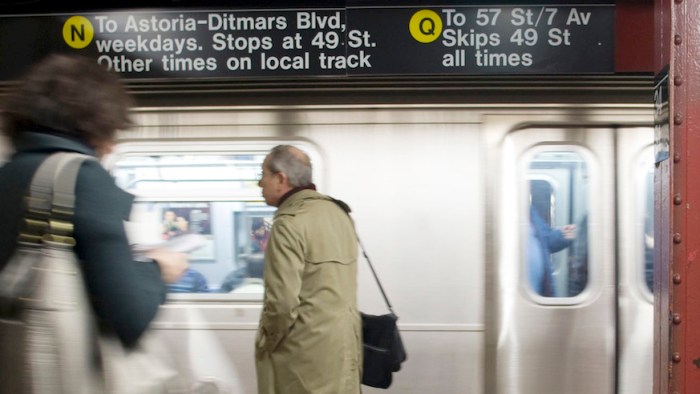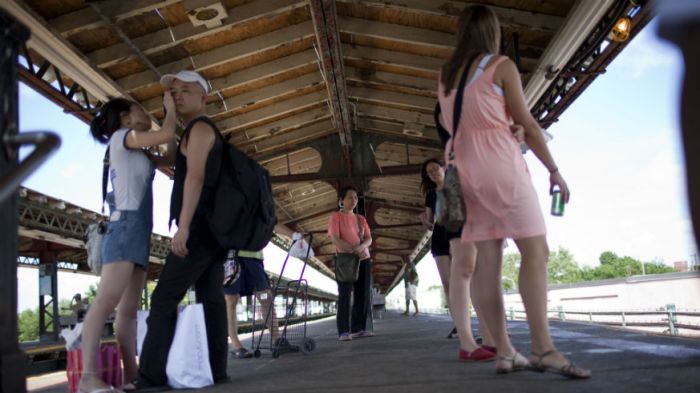With record NYC subway and Long Island Rail Road ridership, it is time to revisit the closed entrances and passageways to numerous stations over past decades. According to a 2015 NYC Citizens Budget Commission report, it will take until 2067 for all 471 NYC subway stations to reach a state of good repair. This could include providing funding to reopen many of the 119 subway station entrances and passageways closed during the late 1970s. This decision was based on a combination of declining ridership, along with security and safety concerns. There is little funding under the NYC Transit Capital Stations Program contained within the $32 billion MTA 2015 – 2019 Five Year Capital Program to support this work.
Until the early 1980s, both LIRR and New Jersey Transit riders exiting east at Penn Station had a direct underground passageway known as the Hilton Corridor. It was also known as the Gimbels passageway. Gimbels was Macy’s chief competitor at Herald Square. This provided a simple indoor connection to the 34th Street Herald Square IND and BMT subways, along with the Port Authority Trans Hudson (PATH) station complex.
Further, there was an underground passageway along Sixth Avenue which went as far north as 42nd Street. As a teenager, I remember avoiding the rain and snow by using this indoor path. It would provide easy access to both the New York public library main branch and Stern’s 42nd Street department store.
Both passageways were closed many decades ago by NYC Transit and the LIRR, due to security issues. If reopened today, commuters would have easy connections to the Broadway N, R, Q and W and Sixth Avenue B, D, F and M subway lines, along with the PATH system – rather than walking outside on the street exposed to both inclement weather and heavy vehicular traffic. By using either the subway or walking, riders would have direct access via these subway lines to Manhattan’s Midtown and East Side along with the Broadway, Sixth Avenue, 42nd, 53rd, 59th or 63rd Street corridors, served by numerous subway lines and stations. Consider transit riders’ disappointment that a proposal submitted by one of NYC’s developers, Vornado Realty Trust, to pay for construction to reopen the old Hilton Corridor was never completed.
They had offered to do this in exchange for a city zoning variance to construct a high-rise office building at Seventh Avenue and 32nd Street. While the zoning variance was approved, Vornado Realty Trust never moved forward with construction of a high-rise office building. This was due to a weak market for potential renters.
This connection could probably be restored in several years for less than the cost of one individual MTA East Side Access construction contract or several of the larger construction contract change orders. Vornado Realty Trust estimated that the cost for reopening this 800-foot indoor corridor would be under $150 million dollars. The Vornando Trust developers’ proposal to reopen and widen it (at some points, it narrows to 9 feet) for $50 million. Converting the total length to 15-feet wide could cost up to another $100 million. Diogenes is still searching for an elected official or MTA board member to step forward and suggest adding this project for $150 million to the $32 billion MTA Five Year 2015 – 2019 Capital Program. Why wait for the $10.8 billion MTA LIRR East Side Access to Grand Central Terminal to start service in December 2023, when you could provide the same Midtown east access for less than $150 million by 2020?
Larry Penner is a transportation historian and advocate who previously worked 31 years for the US Department of Transportation Federal Transit Administration Region 2 NY Office.



















